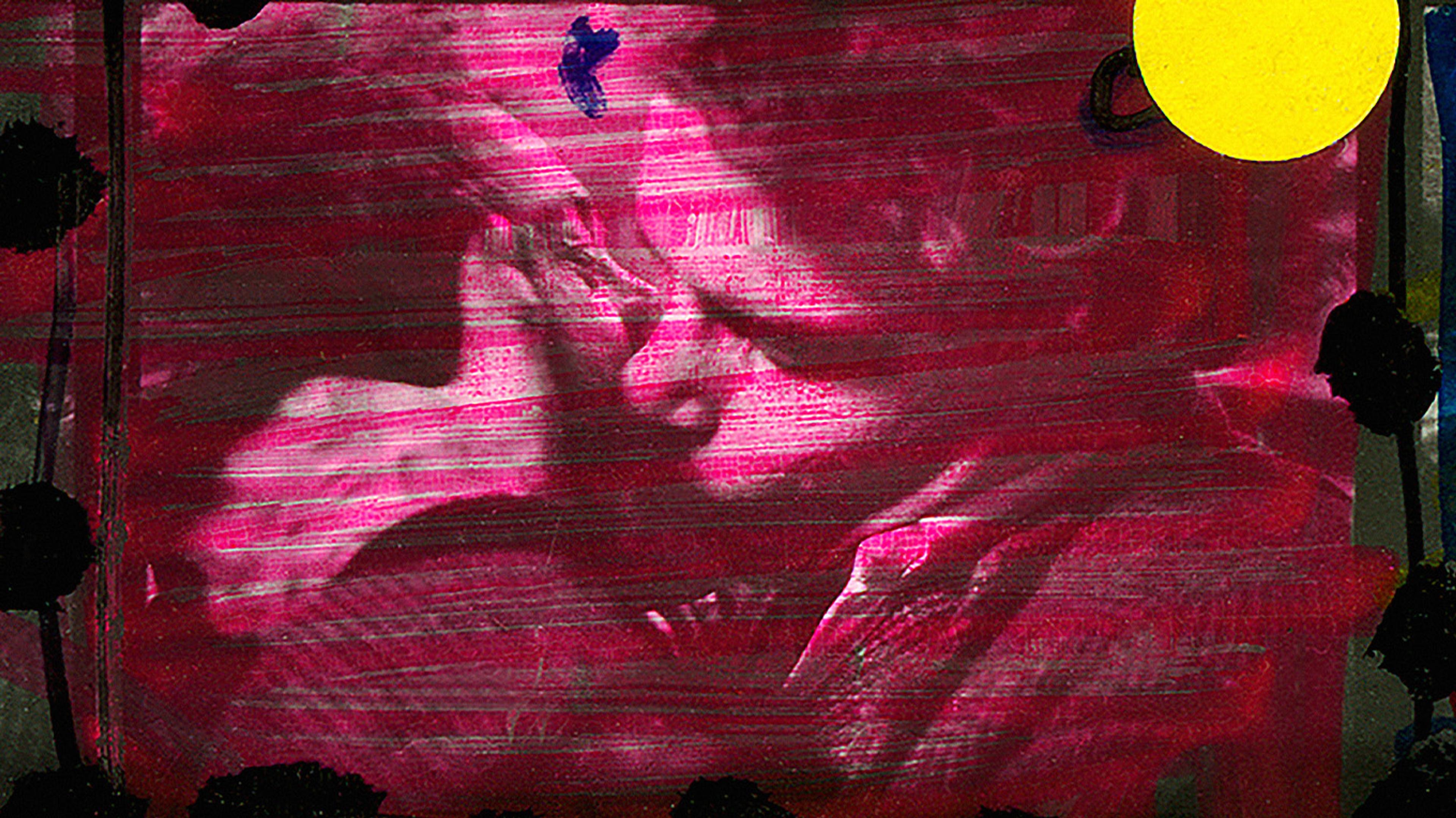Anders Petersen
Color Lehmitz

One of Sweden’s most significant photographers is driven by a dedication and a presence that’s made him one of the most relevant photographers in Europe. Anders Petersen is now exhibiting Color Lehmitz at Fotografiska, curated by Angie Åström in cooperation with Fotografiska’s exhibition producer Emilie Ackerman. Here, the contact sheets from the legendary series of images taken in the port area of Hamburg are shown, together with colorful notes and comments by Petersen.
Anders Petersens blick är den som syns genom kameralinsen
There is something about the gaze. A gaze that tells you that here, right here, you can be yourself. Here you can flourish, rest, and endure.
Anders Petersen’s gaze is seen through the camera lens. It meets its fellow humans in an atmosphere of encouraging curiosity, and in one millisecond it manages to capture the moment. A moment that confirms that we are all connected – that there is a bond between us humans that we might not be able to explain scientifically, but we can all sense it, and recognize when someone manages to capture it on film.
“If you really want something, it’s a question of life and death. Then nothing but a kind of razor-sharp intuition works for the onset, and daring to be weak enough. Not strong, but weak, and welcoming an unbiased meeting – we are all, after all, family. For me, it was never actually about being a photographer, it was always about the human connection, and the camera is my tool”, says Anders Petersen.
In that way the legendary series from Café Lehmitz, that is now exhibited as Color Lehmitz at Fotografiska, is as relevant today as when the pictures were taken during the late ’60s. Taken by a young Swedish man, escaping his complicated childhood and adolescence, and longing for connection – always looking for a father figure and a belonging beyond class and barriers.
“Anders Petersen is a master that, with his black-and-white, documentary pictures, in this series manages the difficult task of being constantly relevant. With these contact sheets we are taken straight into this young man’s existence and expressive reflections. The generous courage of the older Anders is now making it possible for us see this process”, says Emilie Ackerman, exhibition producer at Fotografiska.
He found the presence he had been longing for at Café Lehmitz in the port area of Hamburg, along the street with 25 brothels open around the clock. In this place that never slept, many different fates congregated – sailors, dock workers, neighborhood residents, prostitutes, young drifters, and aging people trying to hold on to some kind of life. A place of survival where 23-year-old Anders was invited and accepted.
“It's a place that I absolutely don't want to romanticize, since the circumstances were anything but that. But there was still that universal togetherness and presence that is often missing from fancy parlors or properly lit break rooms...”
Café Lehmitz
As a teenager he had already spent six months in this seaport, and later he returned to portray his friends, then as a student at Christer Strömholm’s school of photography. Once in Hamburg, at the Scandi Bar where they used to meet, it turned out most of them were gone: dead or departed. But Gertrud, one of the few that still remained, decided to bring Anders to a place further into Reeperbahn’s shady quarters.
That place was Café Lehmitz, where a true meeting took place during 1967-1970, and this is where Petersen’s first exhibition was held for four days in 1970. After bar manager Kurt had given his approval, 350 images were hung with thumbtacks, and anyone who recognized themselves in a picture was welcome to take it. Petersen saved the second copy for a book, that would eventually become a world-famous photo-book. Published in 1978, this book gave space to some of society’s most vulnerable, portrayed with such tenderness, belonging, and stringency as to make it both universal and timeless.
“When the series was recently shown in Russia I stood in the exhibition room, where no-one recognized me, with an interpreter that was translating the visitors’ reactions. How they related to their own situation, their own near and dear ones, gave me goose bumps. That my pictures invite people to see each other, and through that also see themselves, is a gift and my main motivator”, says Petersen.
When, for example, 61-year-old Elfride, who’s been a prostitute since she was about 13, is informed by the brothel owner that she isn’t earning them enough and is kicked out onto the street, Petersen is present with that unique gaze and takes a photograph where her pain and vulnerability are almost unbearable to behold. This is how tangible the possibility of recognition is in these images. If you dare to be weak enough to face it. Not strong, but weak enough…